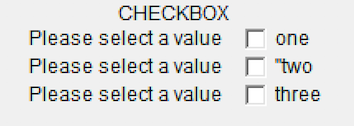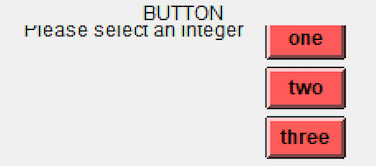Appendix
This content is an excerpt from
z-Tree 3.5: Tutorial and Reference Manual
by
Urs Fischbacher, Thurgau Institute of Economics at the University of Konstanz
Katharine Bendrick, Southern Connecticut State University
Stefan Schmid, University of Zurich
Zleaf properties
- /server adr
- adr contains the IP address of the experimenter PC.
- /name name
- name is the name the client has in the clients’ table.
- /nameisipaddress
- The IP address is the name the client has in the clients’ table.
- /size widthxheight
- Size of the client’s window. In this way you can test on a large screen how the layout will look on a small screen. For example, the VGA format is 640x480. There may be no spaces around the 'x'.
- /position xpos,ypos
- Position of the client’s window with respect to the top left corner. There may be no spaces around the comma.
- /fontsize size
- Sets the font size.
- /fontface face
- Sets the font face.
- /buttonfontface face
- Sets the font face for buttons.
- /logtime
- Stores time at which input is made or the screen is updated. It uses the time on z-Leaf. This time is therefore not influenced by network delays. On the other hand, this time is not synchronized across different subjects.
- /logtimelocal
- The timing information is stored on a local directory on the z-Leaf computer.
- /xlsdir dir
- Location where the time file is stored locally, on the z-Leaf computer.
- /xlsdirsrv dir
- Location where the time file is copied when the experiment is finished. It prevents network traffic during the experiment.
- /counttriggers control_register,bit_to_test
- Instructs z-Leaf to read the parallel port and record triggers from external hardware (i.e. fMRI
scanner).
- Instructs z-Leaf to read the parallel port and record triggers from external hardware (i.e. fMRI
Input layouts
Integer number
1

Text (predefined)
!text: 1="one"; 2="two"; 3="three";

Radio
!radio: 1="one; 2=two"; 3="three";

Radioline
!radioline: 1="one"; 3="three";3;

Radiosequence
!radiosequence: 1="one; 2=two"; 3="three";

Slider
!slider: 1="one"; 3="three";3;

Scrollbar
!scrollbar: 1="one"; 3="three";3;

Checkbox
!checkbox: 1="one; 2=two"; 3="three";

Button
!button: 1="one; 2=two"; 3="three";

!string
Important functions
Scope operator
The scope operator : defines which variables are used to compute function's outcomes.
Take the following example form the manual
C = sum( A * B); D = sum( :A * B); E = sum( :A * :B);
| A | B | C = sum( A * B ) | D = sum( :A * B ) | E = sum( :A * :B ) |
|---|---|---|---|---|
| 2 | 5 | 10 + 48 + 56 = 114 | 10 + 24 + 14= 48 | 10 + 10 + 10 = 30 |
| 4 | 12 | 10 + 48 + 56 = 114 | 20 + 48 + 28 = 96 | 48 + 48 + 48 = 144 |
| 8 | 7 | 10 + 48 + 56 = 114 | 40 + 96 + 56 = 192 | 56 + 56 + 56 = 168 |
This is an example taken from the manual (page 27)
| A | V |
|---|---|
| 1 | 3 |
| 4 | 6 |
| B | V |
|---|---|
| 7 | 8 |
| 10 | 11 |
| 13 | 14 |
This is the zTree code
X1= sum(V); X2= tb.sum(V); X3= tb.sum(:V); X4= sum(:V); X5= tb.sum(:V); X6= sum( product (V) ); X7= sum( product (:V) ); X8= sum( product (::V) ); X9= tb.sum( product (V) );
These are the results
| A | V | X1 | X2 | X3 | X4 | X6 | X7 | X8 | X9 | ||||||||
|---|---|---|---|---|---|---|---|---|---|---|---|---|---|---|---|---|---|
| 1 | 3 | 9 | 33 | 9 | 6 | 36 | 45 | 18 | 3696 | ++ | |||||||
| 4 | 6 | 9 | 33 | 18 | 12 | 36 | 45 | 72 | 3696 |
The scope operator allows also to specify the level to which we access one variable when functions are carried out in nested tables.
Take the following example: the variable is present in table , in table and in table .
Assume that the following operation is conducted in table .
The equation shows the "scoped" variables